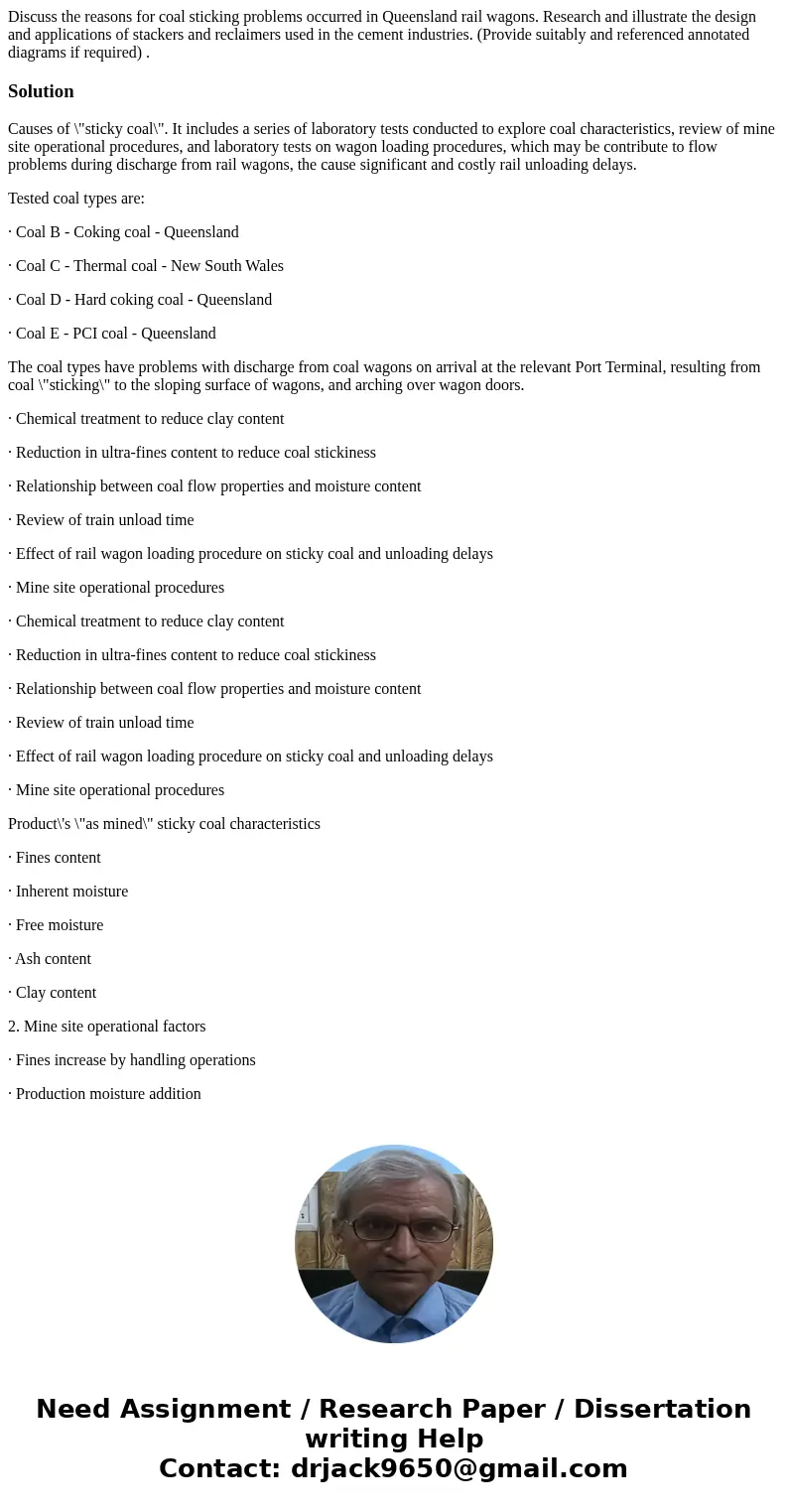Discuss the reasons for coal sticking problems occurred in Q
Solution
Causes of \"sticky coal\". It includes a series of laboratory tests conducted to explore coal characteristics, review of mine site operational procedures, and laboratory tests on wagon loading procedures, which may be contribute to flow problems during discharge from rail wagons, the cause significant and costly rail unloading delays.
Tested coal types are:
· Coal B - Coking coal - Queensland
· Coal C - Thermal coal - New South Wales
· Coal D - Hard coking coal - Queensland
· Coal E - PCI coal - Queensland
The coal types have problems with discharge from coal wagons on arrival at the relevant Port Terminal, resulting from coal \"sticking\" to the sloping surface of wagons, and arching over wagon doors.
· Chemical treatment to reduce clay content
· Reduction in ultra-fines content to reduce coal stickiness
· Relationship between coal flow properties and moisture content
· Review of train unload time
· Effect of rail wagon loading procedure on sticky coal and unloading delays
· Mine site operational procedures
· Chemical treatment to reduce clay content
· Reduction in ultra-fines content to reduce coal stickiness
· Relationship between coal flow properties and moisture content
· Review of train unload time
· Effect of rail wagon loading procedure on sticky coal and unloading delays
· Mine site operational procedures
Product\'s \"as mined\" sticky coal characteristics
· Fines content
· Inherent moisture
· Free moisture
· Ash content
· Clay content
2. Mine site operational factors
· Fines increase by handling operations
· Production moisture addition
· Stockpile residence time factors
· Rainfall moisture addition
3. Wagon loading procedure
· Coal drop height
· Impact with wagon surface
· Wagon design

 Homework Sourse
Homework Sourse